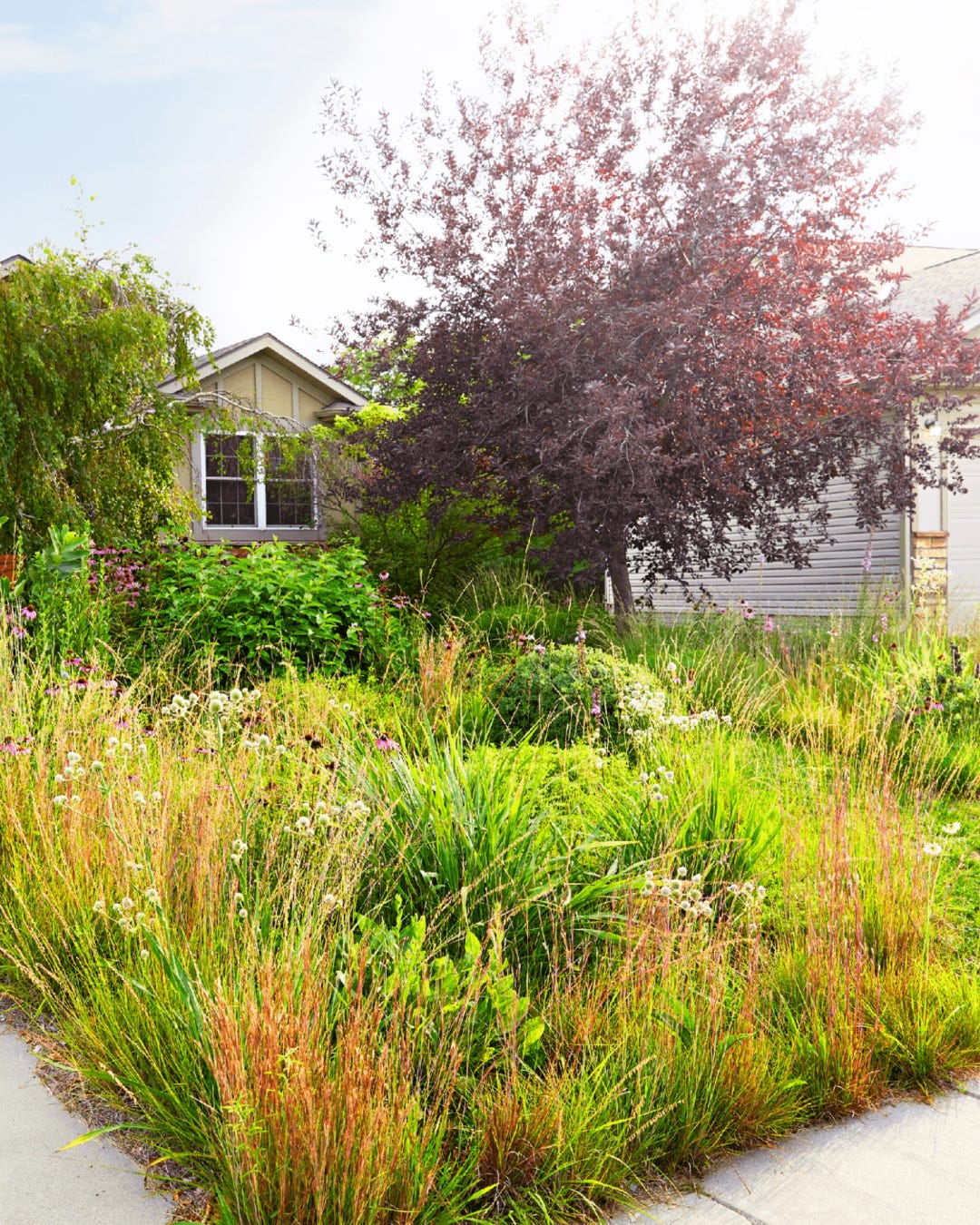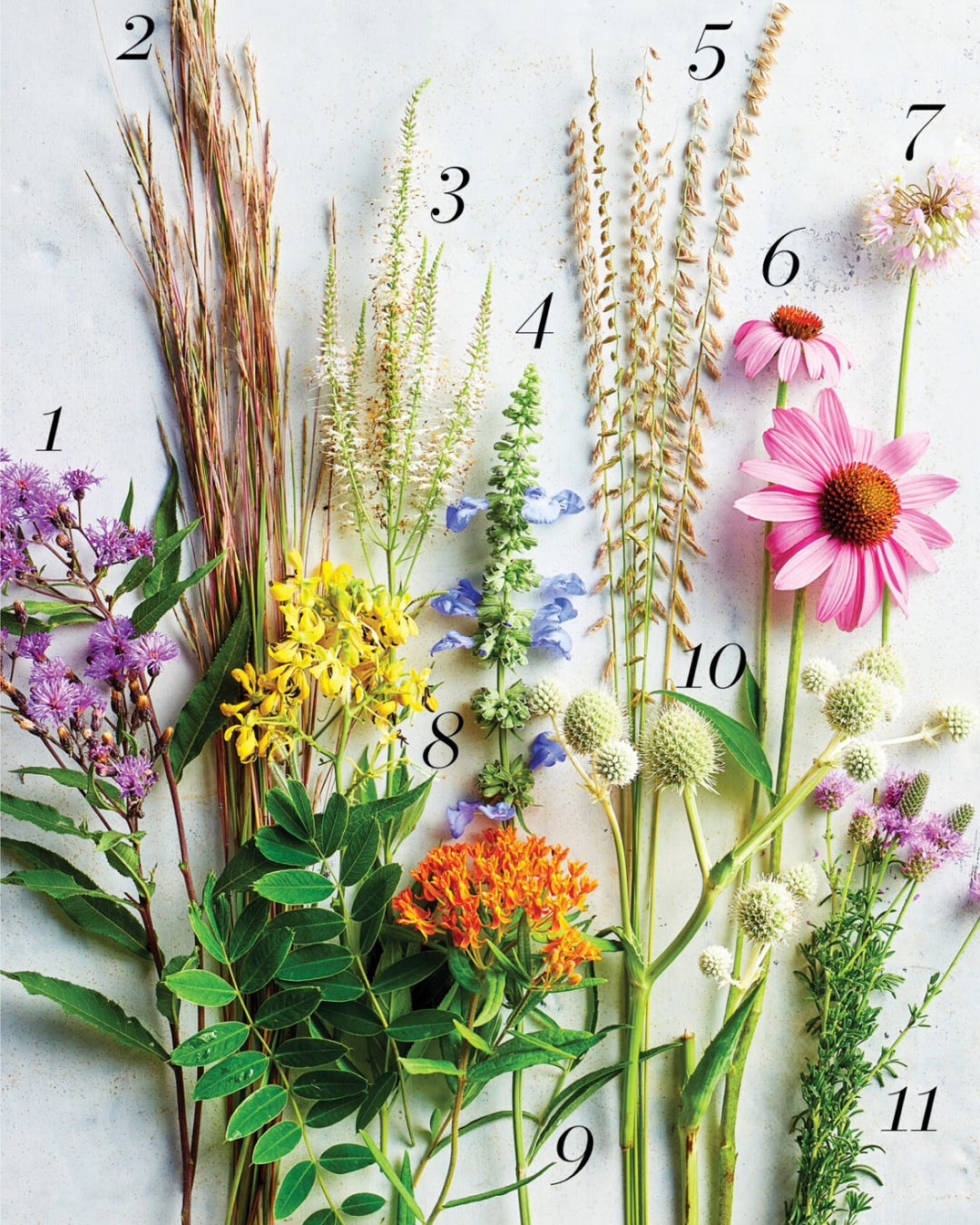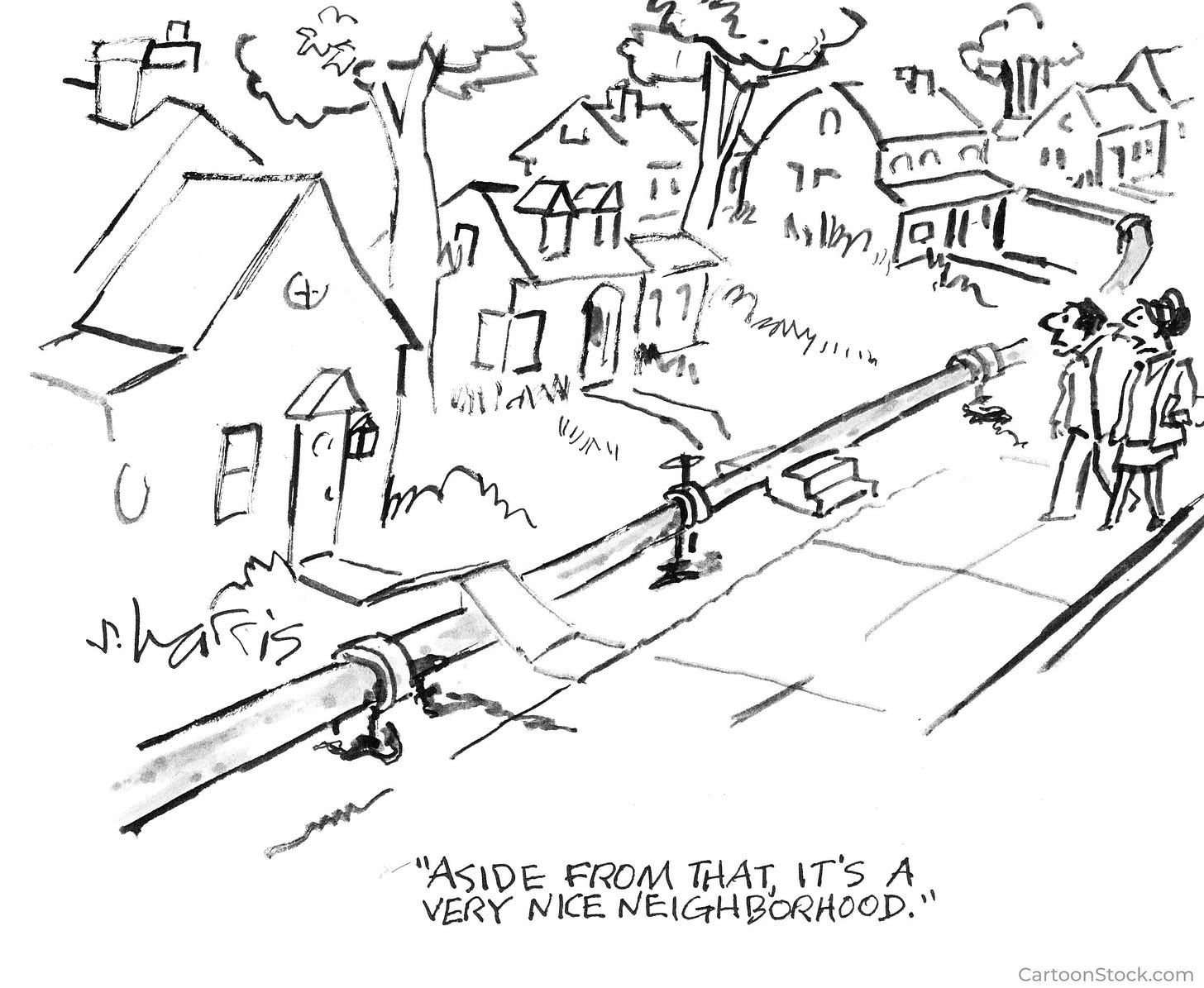Now, Time to Plant
It's easier than you think it is.
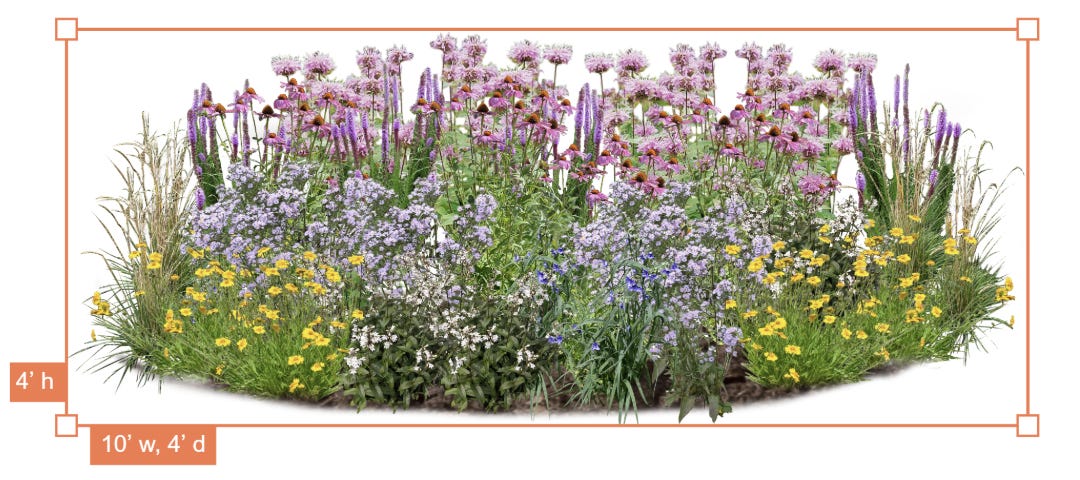
Dear Heather, Our block is known for its leafy, shady tree canopy, which makes it feel like a secluded forest oasis in the middle of the city — at least until the city cut down ten mature trees to make way for a new sidewalk. The city will plant saplings, but it will take decades to replace what was lost. In the meantime, we're all heartbroken by how bare and bleak the street looks. Do you have any advice for what we could plant to restore some of our beauty, shade, and seclusion a little quicker? — Kaitlin, St. Paul, MN
Make flowers while the sun shines? Tall, native wildflowers will give you beauty and some seclusion right away. Your close community of neighbors suggests an opportunity to share ideas and tips on how to replace some previously shady lawn with pollinator patches of vibrant native plants all along the block. You may all take some cheer knowing that you’ll also be increasing biodiversity — and attracting butterflies.
Options include surrounding the city’s new saplings with shade-loving plants to the dripline or add sun-loving beds on either side or both sides of your front paths. My Home Park’s Minnesota native garden kits and online visualization tool makes it easy for neighbors to imagine their transformed front yards. (Use code HOMEGROWN10 for 10% off.)
Minnesota encourages such transformations through its Lawns to Legumes program, so you and your neighbors may each qualify to be reimbursed up to $400 if you apply by May 15. which And each resident may quality for a you may qualify for a Minnesota Lawns to Legumes grant of up to $400.
In terms of shade, I recommend asking the city to plant fast-growing native tree species that will eventually provide the high, broad canopy you previously enjoyed. Good choices among St. Paul recommended street trees include red maple, red oak, and American elm ‘New Harmony’ (a cultivar resistant to Dutch elm disease).
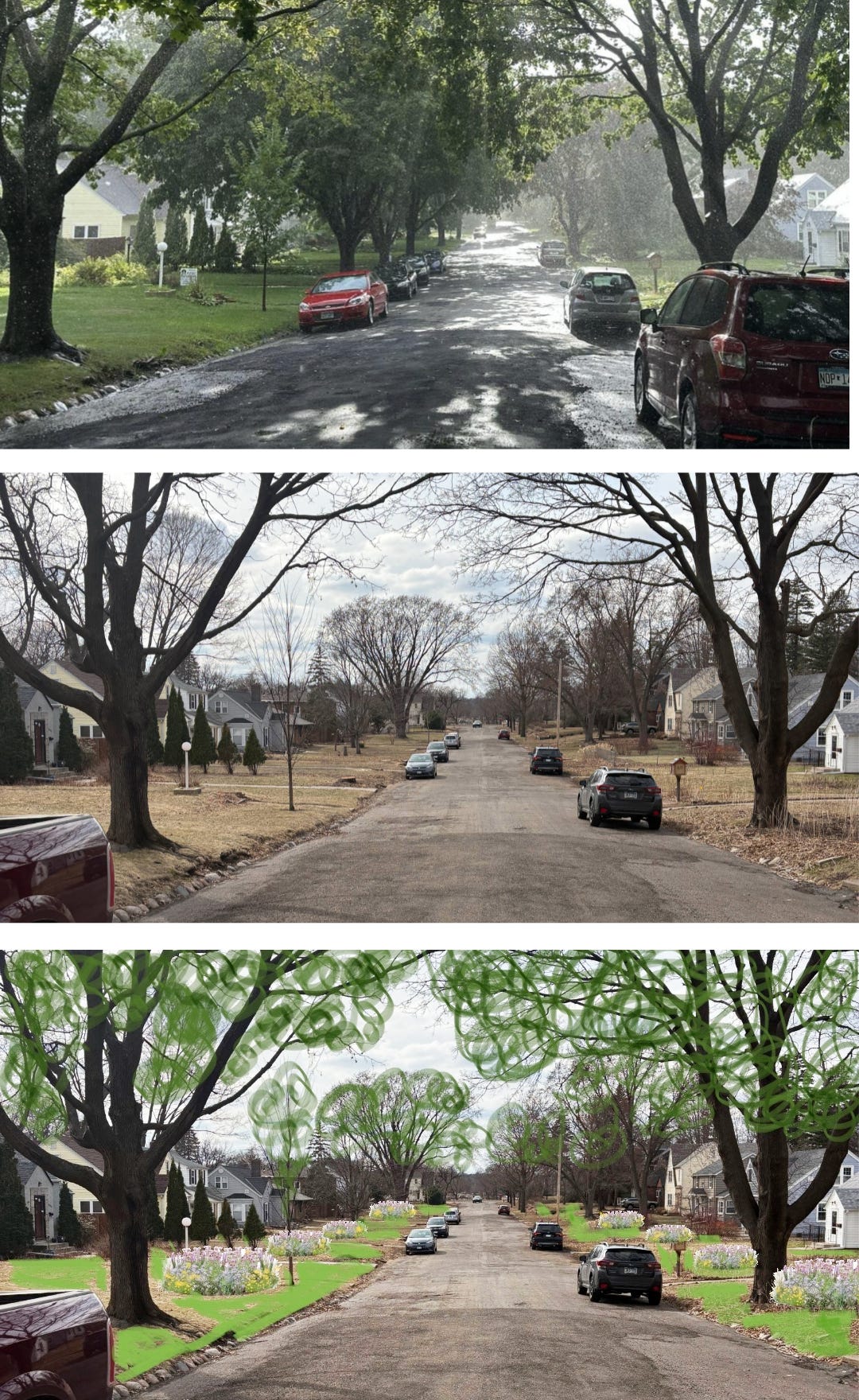
Dear Heather, We have a question about starting new garden beds in the middle of a grassy area. There are a number of approaches that can be taken:
Dig up and remove the top grass/sod layer, then cover with topsoil/mulch/leaves and mix
Cover with cardboard for some time to kill off the grass/sod layer, then dump trucked-in soil over the area
Just dump trucked-in soil over the area
Would you recommend one method over another? Is there a fourth approach that we might consider? — Peter, Hudson Valley, NY
Why, oh why, do all your options involve adding soil? The whole "good soil" thing is a myth — even for growing vegetables, which are finicky exotics. Your soil — whatever it is — is good enough for the natives you are going to plant there.
Whether and, if so, how to get rid of the existing turf depends on what you're planting, how neat you want your beds to look, what the turf is composed of, and how hard you want to work.
Your choice No. 1 — removing the turf — is my favorite among your options. Cover the bare soil with a thick layer of leaves and skip the soil and mulch. (See Mulch Ado About Mulch.) This creates a neat look by removing the existing plants and not letting light get to weed seeds in the soil. If you're planting densely enough for your new plants to shade the soil in one season, then you’ll eliminate much future weeding, too. (See The Latest on Weeds.)
I'm not a fan of the popular "lasagna" method, essentially your choice No. 2. It’s more sustainable not to bring in new material. Plus, new soil often introduces contaminants. However, if the existing turf contains really aggressive invasives, then the lasagna method can eliminate them by killing everything beneath the cardboard and introducing new soil above it. Again, it’s important to plant densely or weeds from blown seeds will grow in any exposed soil, new or existing, the following season.
Choice No. 3 — dumping soil on top of the turf — does the same thing as the lasagna method if you dump enough soil. If not, whatever is there will just grow through the soil. That’s assuming the soil doesn’t come with its own weed seed bank, as soil often does.
A fourth method, which I increasingly prefer, is to plant into the turf and let the natives shade out and outcompete the turf over time. The turf acts as your groundcover in the meantime. This requires tolerance for the messy look of overgrown turf grasses. You can moderate this by scalping the turf (mow as low as possible and/or use a dethatcher) and mowing or weed-whacking it before it goes to seed.
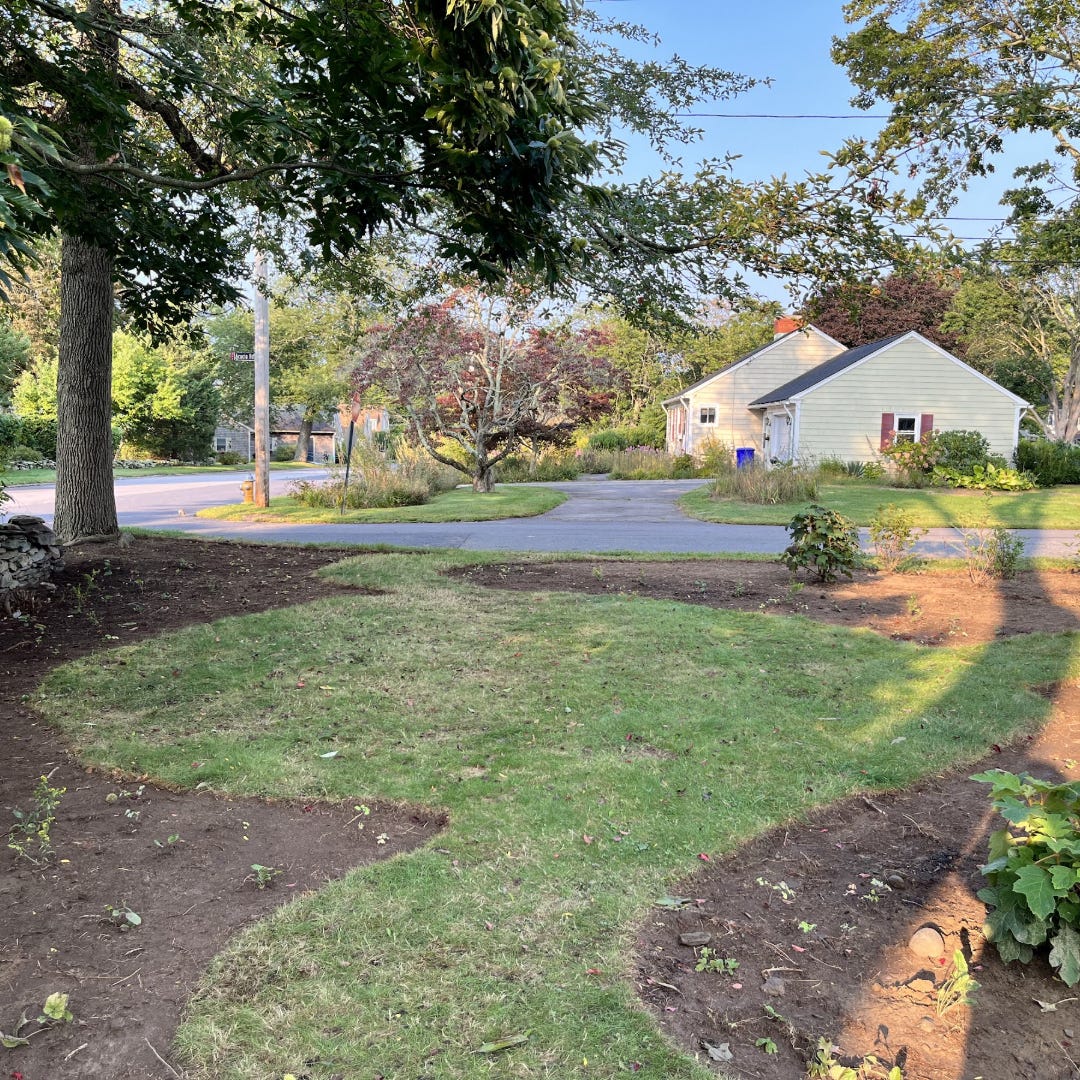
Why, How, Wow!
Why? Amendments are counterproductive
Amending soil with organic matter, topsoil, and fertilizers is a traditional horticultural practice that’s counterproductive in a native garden. Amendments encourage weeds and can super-size native plants, causing them to flop over.
The truth is it's far smarter to plant species that are adapted to the existing character of your soil. This sort of “one size fits all” soil preparation recommended by traditional horticulture is not only labor and resource intensive, it creates a situation that promotes virtually every kind of weed. And the compost, manure, or topsoil you import is likely to bring with it seeds and roots of invasive plants. Typically, a far smaller assortment of weeds is adapted to the more specialized character of your existing soil, which makes their control much easier. — Garden Revolution
How: Follow the dripline
If you’re planting shrubs or trees, an easy turf-removal solution is to remove turf and plant natives within their drip lines, gradually expanding the planting area each year. In the meantime, you can continue to mow around them.
Planting natives under host trees creates “pupation stations” for caterpillars that drop to the ground. In his just-released book, Doug Tallamy describes how these soft landings also ease the work of reducing lawn over time:
Creating soft landings is also a smart way to start reducing the area of lawn you have over time. As your tree grows, you can expand the bed at least to the dripline. This reduces the amount of work needed to remove lawn because it spreads the effort out over time, and it’s less of a visual shock to your neighbors. As I write, I am looking out my window at an oak tree I planted from an acorn 22 years ago. It now has a canopy spread of 40 feet and covers a bed beneath it with an area of 1,247 square feet. In effect, adding that one tree to my yard has reduced my lawn area by 1,247 square feet, with no labor on my part! — How Can I Help? Saving Nature with Your Yard
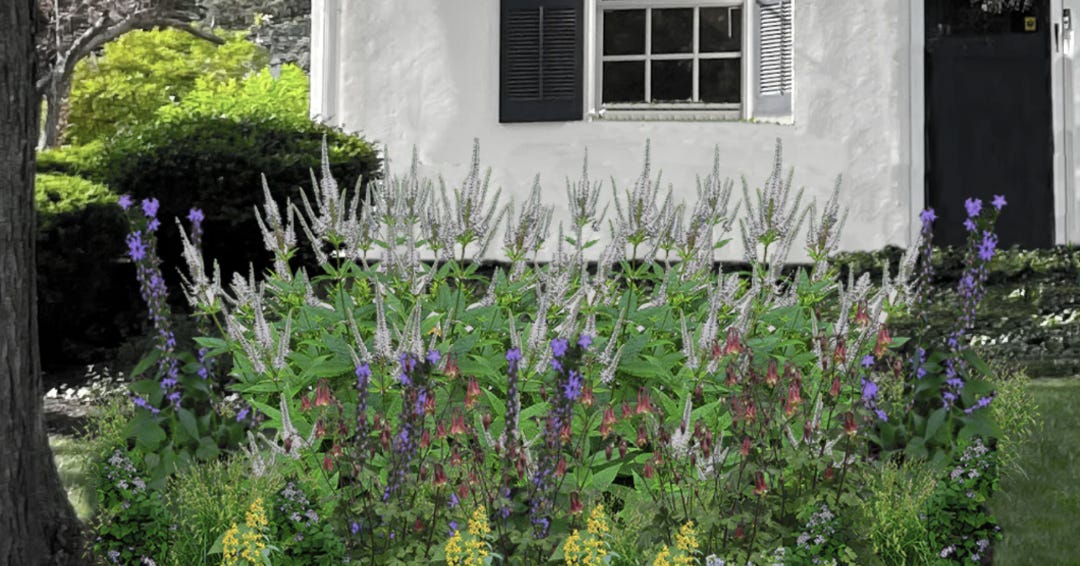
Wow! Ben Vogt’s pocket prairie
I’m thrilled to see more mass market publications showcasing mostly-native gardens. The April issue of Better Homes & Gardens, for example, includes an article on the Nebraska front yard of Prairie Up’s Ben Vogt. The inclusion of lots of grasses, typical of the Prairie Modern Yardenality™, give Vogt’s yard a more wild look than then all-wildflower plant palette in the My Home Park kits above.
Vogt’s palette includes a variety of colors and textures and winter interest in the form of seedheads. “I am often selecting plants for how good they look in winter since that’s half the year here,” Vogt told the magazine.
1. Prairie ironweed — Tall stems are topped with magenta flowers in late summer, iron-color seed heads in fall and winter.
2. Little bluestem — Grass that turns bright copper in early autumn.
3. Culver’s root — White spiky flowers with a long bloom time.
4. Blue sage — Native to the prairies of Nebraska and loved by pollinators.
5. Sideoats grama — Drought-tolerant fast grower that helps suppress weeds.
6. Coneflower — A cheerful standby in summer with dramatic seed heads in winter.
7. Nodding onion — Blooms in August, when many other flowers are spent.
8. Wild senna — Self-seeds freely; seed heads turn black-brown in the winter.
9. Butterfly weed — A bright, shorter-than-the-average milkweed species reaching only 2 feet.
10. Rattlesnake master — Blue-gray foliage that makes a great foil for colorful plants.
11. Purple prairie clover — Incredibly drought-tolerant; can attract rabbits.
10 Weekends to Wild Challenge #5: A daily stroll
Find a time when you can spare five minutes to stroll a circuit around your yard each day, then make it a habit. I stroll around my yard each day after breakfast and get great joy from seeing all the changes that happen from one day to the next, like new flowers blooming and new species of butterflies flitting about. Walking just two to five minutes after a meal also significantly decreases blood glucose levels.
ICYMI
Challenge #1: Check your winter views
Challenge #2: Score some seating
Challenge #3: Name your theme
Challenge #4: Get thee to a nursery!


